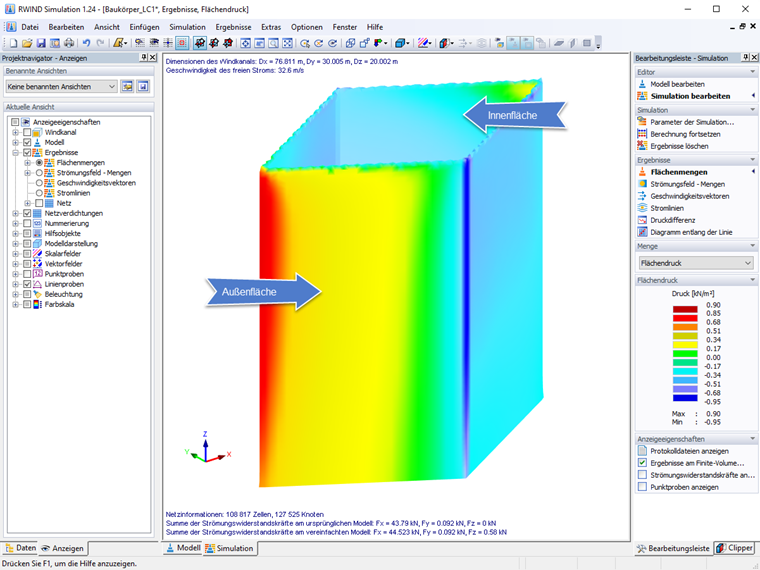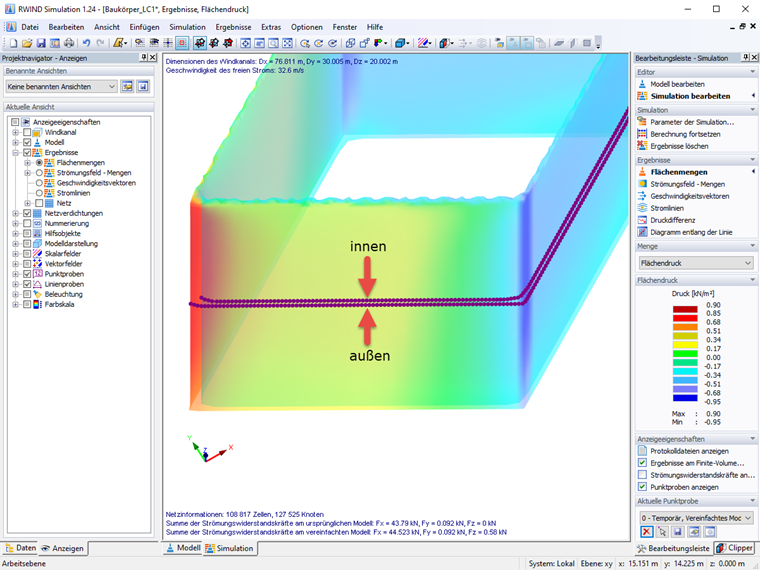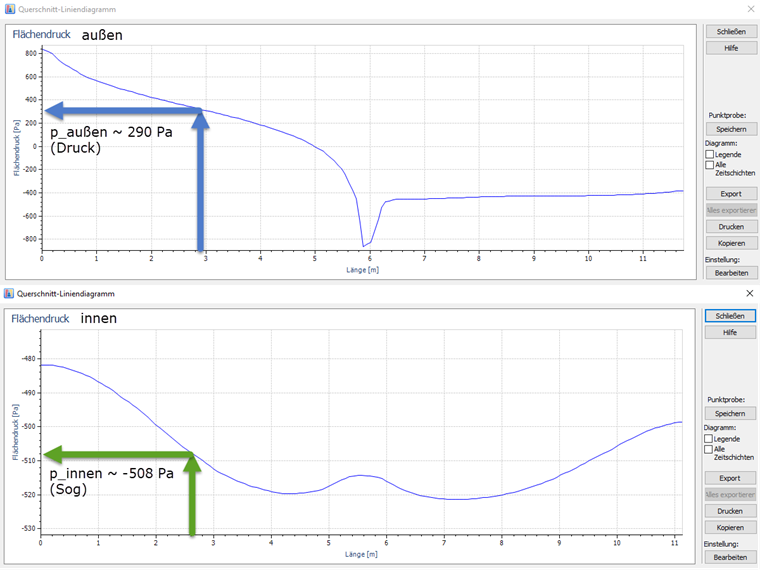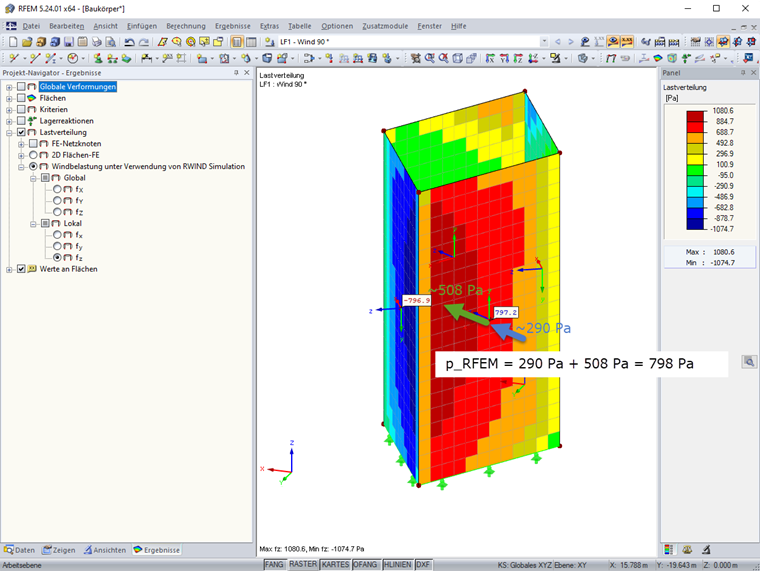The RWIND Simulation program creates an envelope in the form of a solid mesh around the model from RFEM.
Due to the wind flow around this envelope, a discrete surface pressure distribution arises that alternates between positive and negative values. In RWIND Simulation, this surface pressure is clearly displayed on the outside of the solid envelope.
When transferring data to RFEM, the program transforms these pressures on the outer surface of the solid envelope back to the structural model of RFEM. In this case, the surface pressures are transformed back around
- a member as the resulting forces on the FE nodes of the member centroid,
- a surface as resulting forces on the FE nodes of the centroid of the surface, and
- a solid as the resulting forces on the FE nodes of the solid surface.
In summary, the internal and external pressures of a structural component to net loads are simplified for the RFEM calculation.
For elements with "double-sided" flow, the surface pressure will always differ between RFEM and RWIND Simulation due to the summation of the surface pressures to resulting pressures.
Furthermore, the orientation of the element coordinate systems must be taken into account when interpreting the wind pressures in RFEM. The displayed pressures do not refer to the sign (positive – pressure, and negative – suction), as in RWIND Simulation, but to the local element coordinate system of the respective elements.




